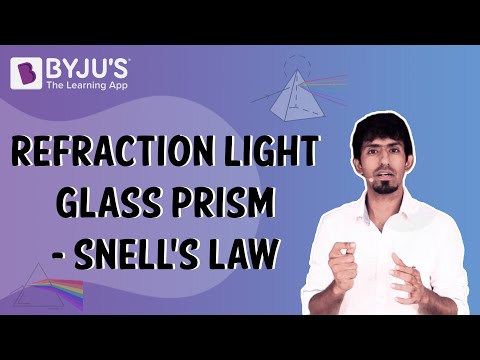Access the latest Class 12 Physics MCQs for Chapter 9 Ray Optics and Optical Instruments, along with their answers. The MCQs with answers for Class 12 Physics are created as per the latest exam pattern. These questions will help students improve their critical thinking abilities and help them score good marks in the board exams.
Download Chapter 9 Ray Optics and Optical Instruments MCQs PDF by clicking on the button below.
Download PDF
Class 12 Ray Optics and Optical Instruments MCQs
Check the multiple-choice questions for the 12th Class Physics Optical Instruments Chapter. Each MCQ will have four options here, out of which only one is correct. Students have to pick the correct option and check the answer provided here.
1. Which of the following lights deviates the most when it passes through a prism?
- Red Light
- Violet Light
- Neither (a) nor (b)
- Both (a) and (b)
Answer: (b) Violet Light
Explanation: Violet Light deviates the most when it passes through a prism.
2. Which of the following phenomena of light results in a mirage?
- Refraction of light
- Reflection of light
- Total internal reflection
- Diffraction of light
Answer: (c) Total internal reflection
Explanation: Total Internal Reflection results in a mirage.
3. For which of the following is the field of view maximum?
- Concave mirror
- Convex mirror
- Plane mirror
- Cylindrical mirror
Answer: (b) Convex Mirror
Explanation: For convex mirrors, the field of view is maximum.
4. What happens when the light is refracted into a medium?
- Both frequency and wavelength of the light increase
- The wavelength increases but the frequency remains unchanged
- Both wavelength and frequency decrease
- The wavelength decreases but the frequency remains constant
Answer: (b) The wavelength increases but the frequency remains unchanged
Explanation: When the light is refracted into a medium its wavelength increases but the frequency remains unchanged.
5. If a glass prism is dipped in water, what happens to its dispersive power?
- Increases
- Decreases
- Does not change
- No effect
Answer: (b) Decreases
Explanation: If a glass prism is dipped in water, its dispersive power decreases.
6. What should be increased to increase the angular magnification of a simple microscope?
- The power of the lens
- The focal length of the lens
- Lens Aperture
- Object Size
Answer: (a) The power of the lens
Explanation: The power of the lens should be increased to increase the angular magnification of a simple microscope.
7. Which of the following phenomenon is used in optical fibre?
- Refraction
- Diffraction
- Scattering
- Total Internal Reflection
Answer: (d) Total Internal Reflection
Explanation: Total Internal Reflection is used in optical fibre.
8. Which of the following statements is true for total internal reflection?
- Light travels from rarer medium to denser medium
- Light travels from denser medium to rarer medium
- Light travels in water only
- Light travels in the air only
Answer: (b) Light travels from denser medium to rarer medium
Explanation: For total internal reflection, the light must travel from a denser medium to a rarer medium.
9. A convex lens is dipped in a liquid whose refractive index is equal to the refractive index of the lens. Then what is its focal length?
- Focal Length will become zero
- Focal Length will become infinite
- Focal length will reduce, but not become zero
- Remains unchanged
Answer: (b) Focal Length will become infinite
Explanation: The focal length of the lens becomes infinite.
10. For a telescope, the larger the diameter of the objective lens
- Greater the resolving power
- Greater the magnifying power
- Smaller the resolving power
- Smaller the magnifying power
Answer: (a) Greater the resolving power
Explanation: For a telescope, the larger the diameter of the objective lens, the greater the resolving power.
Watch the video to visualise the refraction of light through a glass prism.

Stay tuned to BYJU’S and Fall in Love with Learning!

Comments